Rising From the Grave
The Japanese RPG hit its console peak during the SNES/PS1 eras. With the advent of more powerful current-gen systems, rising development costs, and an increasing popularity in Western RPGs, old-school JRPGs are few and far between on consoles. Handheld systems have given the genre a new home, but every now and then, a developer will eschew this trend and release a traditional turn-based RPG on a home console (as well as, in this case, on the PC). Such is the case with Zeboyd Games and its two new downloadable RPGs, Cthulhu Saves the World and Breath of Death VII.
Let me say from the outset that I’m reviewing these games together since they’re virtually the same game, albeit each with its own plot, setting, and characters. In Cthulhu Saves the World, you’re tasked with helping the squid-god attain hero status to recover his lost powers (with which he can then destroy the world!). In Breath of Death, the world’s population has already been annihilated by nuclear apocalypse, and the Earth has now been repopulated by the walking dead and undead. The differences are minimal and will be pointed out in due detail.
Breaking Chains and Smashing Walls
Cthulhu and Breath are as much game as they are parody. The games feature a heavy amount of tongue-in-cheek humor, and frequently break the fourth wall to caricature traditional RPG conventions. For example, at the very outset of Cthulhu, the title character’s evil powers are sealed away by an unknown wizard. The narrator lets the player know what Cthulhu will need to do in order to regain his evil powers. With a triumphant grin, Cthulhu himself then pipes up and taunts both the narrator and player by revealing to them he was eavesdropping on the narrator, and now knows what he must do to reclaim his powers.
In a similar move, Dem, Breath of Death‘s main hero, is a take on the silent protagonist featured in much of traditional JRPG history. However, in Dem’s case, he’s silent not by his own choise or through some game design mechanic; he’s tacit because he’s an undead skeleton and has no tongue! The narrator quickly realizes that not hearing your hero speak can be a problem, so he kindly turns on the ‘Thoughts-Subtitle-O-Matic’, which from that point on enables the player to read Dem’s thoughts.
The games lampoon just about every other JRPG convention, such as new characters joining the player’s party throughout the adventure. Breath of Death‘s Dem is a loner, and heavily objects when new characters attempt to join his party. However, since he also can’t talk, he’s unable to make his objections known, and so his companions “forcefully join his party”, against his wishes. Meanwhile, Cthulhu welcomes his first party member, love-smitten Umi, proclaiming, “Yes! The great Cthulhu requires groupies! You shall do.”
The writing is consistently hilarious, first poking fun at and then completely skewering RPG tropes one by one. This does come at the expense of a serious and strong plot; you should know what type of experience you’re opting for before purchasing these titles. On the whole, I found the story in Breath of Death to be more solid (as much as either of the games has a “solid” story), since Dem’s party members usually have a specific goal or quest they want to pursue, whereas Cthulhu‘s plot is much looser, with the squid-faced god generally just looking for heroic deeds to perform.
Fresh Meat for the Grinder
So much for the similarities. In terms of gameplay however, the games are virtually identical. You’ll navigate towns, dungeons, and the world from a top-down perspective, with battles occurring in dungeons and on the world map. Towns feature your standard inn, shop, and aimlessly wandering citizens to speak to. When outside of towns, you’ll be able to earn experience battling groups of enemies. The battles are random, and each area of the game has a cap to the number of encounters you’ll be able to participate in. So, in a particular dungeon, the maximum number of encounters may be set to 50; however, I was always able to advance through an area/find the treasure/defeat the boss well before I had won the maximum battles allotted. However, this can be a problem, as later bosses (and some large groups of enemies) get incredibly powerful, and without some serious grinding your party will be too underpowered to succeed against these foes. There is also an option in the menu to fight additional battles after the maximum cap has been reached.
Graphically, the battles can be a bit underwhelming for those of us used to gorgeous 3D FMV-quality graphics. The enemies are static sprites, who don’t move at all (each enemy type has one or two additional frames of animation for certain status effects). Your own party is not represented on the battlefield at all; battles play out in a pseudo-first person perspective. Characters can attack using a wide variety of attacks, abilities, and spells. It is important to finish battles as quickly as possible, since each round that passes by gives your foes a percentage boost in power.
At the end of each battle, all your characters – even those with 0 HP – have their health fully restored, and a number of MP is restored to each character, depending on how quickly the battle was won. You’ll also earn XP for defeating enemies. Each time a character levels up, you’re given two perks to choose from. Generally, they will be two different sets of stat bonuses or two similar spells with slightly different effects. You’ll need to choose wisely, as whichever perk you opt against is gone for good, and you won’t have a second chance at it with your next level-up. This lets players assign roles to their party, such as tank and DPS, and lets you develop each character in their specific direction.
Unfortunately, since we tend to look back upon the past with rose-tinted glasses, we forget that this sort of simple turn-based grinding does get repetitive after a while. In addition, modern games have spoiled us with providing turn gauges to help plan out an attack strategy of sorts; I found that this mechanic would have been very valuable and would’ve added a nice element of strategy to the combat in these games. Overall, I found it best to take these two games in short chunks to keep from getting burned out on the battle system too quickly.
Back in Style?
Cthulhu Saves the World and Breath of Death VII are essentially two different stories set in the same game. Cthulhu does feature battlefield backdrop graphics, whereas Breath places enemies in a black void – Cthulhu’s slightly higher price point nets you a little more polish in the game. Additionally, the upgraded edition Cthulhu Saves the World: Super Hyper Enhanced Championship Edition Alpha Diamond DX Plus Alpha FES HD – Premium Enhanced Game of the Year Collector’s Edition (without Avatars!) comes with a developer’s commentary and a few extra game modes at no extra charge. Despite these differences, it’s the humor and the old-school feeling that are the main attractions, and you can’t really go wrong with either game.
I think my son unintentionally captured the spirit of these games when he walked in on me playing the games and commented, “This is a 360 game? It looks like a Super Nintendo game.” Yes, indeed they do, and for a small price, these games will lovingly caress your fond memories of that golden 16-bit era of JRPGs.
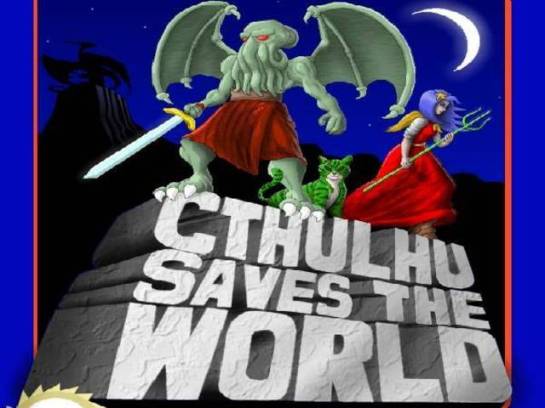
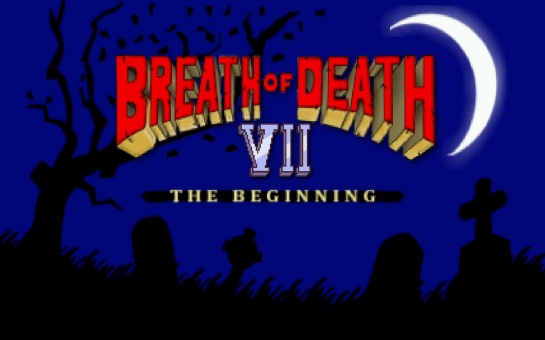
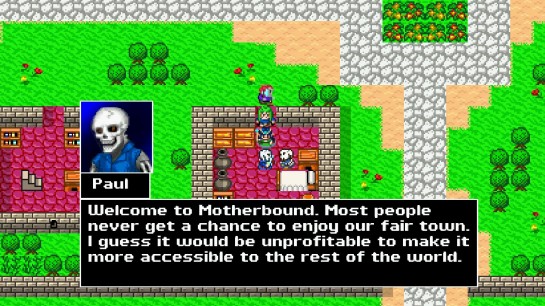
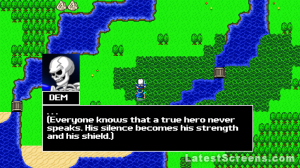
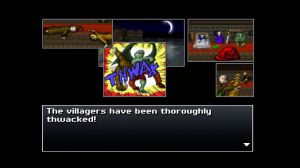
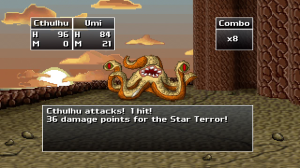
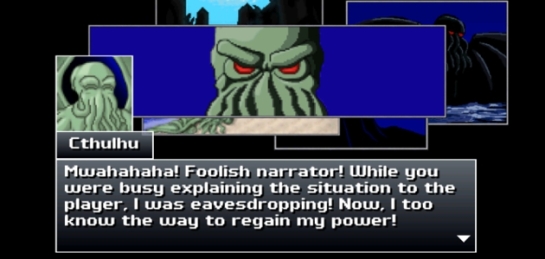
I saw this on Steam and it went right in my wish list. I can’t resist something called “Cthulhu Saves The World”. It’s so audacious that it must be good.